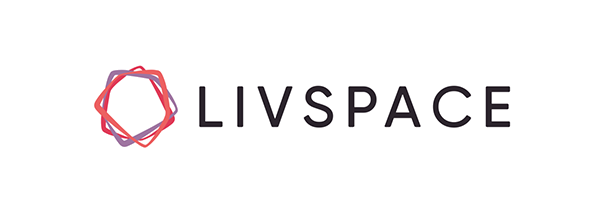18 small business expense categories you need to know
If you’re managing a business, as a CEO, CFO, or finance head, you know how diverse an expense portfolio can be. You also know how difficult it is to consolidate and manage these business expenses. But, do you know how impactful business expense categories can be in making your as well as your teams’ lives easier?
Simply put, if you’re looking for ways to streamline cash flow you should definitely consider organizing company spending into clear-cut and well-thought-out business expense categories. Especially for startups and small and medium-sized enterprises (SMEs), categorization can do wonders for your cash flow and at the same time help you make tax savings.
What are business expenses and how do you categorize them?
Whether you are paying office rent, reimbursing an employee’s travel expenditure, or just buying new curtains for the office, you’re covering a business expense. Business expenses are essentially the costs you incur in the ordinary course of running your business. These expenditures are usually associated with the operational side of running your business, the other side would be anything to do with capital expenditure. Because the taxability and categorization of operational and capital expenditures differ from one another, for this article we are going to be considering the former only and leave the latter for another time.
The types of expenses you incur during the normal course of running a business are plentiful. The types of categories these expenses could fall into are also equally diverse. They can include everything, ranging from how much you spend on your payrolls to how expensive the new lightbulbs you bought for your office are.
How you go about sorting and categorizing these expenditures will go a long way in helping you manage your cash flow and avail tax deductions. The best way to do this is to do it in real-time, i.e. immediately. The worst thing you can do for your cash flow is waiting for the end of a month or year before you sort your expenses. Instead, the best approach to how to categorize business expenses should include:
Log the expense immediately. Preferably via automated software.
Be consistent. Use a universal list of expenses that everybody understands.
Give importance to real-time visibility. Your finance team should be able to access expense data whenever they want, without much labor.
Incorporate cloud-based storage. For the previous point to work, you need to have information stored in digital format, online. Paper trails or computer folders are no good if you want efficiency.
List of business expense categories for growing startup & small businesses
How you categorize your business expenses will not only determine how streamlined your cash flow is but can also help you benefit from small business tax deductions. To do this you need to have a comprehensive list of business expense categories. Some of the most commonly used and relevant categories include:
Payroll
Payroll is an important category to consider given the sizable amount of finances that are dedicated to it. This could include wages, bonuses, or commissions that you pay workers, whether they're full-time employees or contractors.
Rent or mortgage payments
Any money that you pay to either rent, mortgage, or own any office space should be recorded separately in a dedicated category. Especially because it can be included in your list of tax-deductible business expenses.
With the rise of remote work in 2020, the worth of actual office spaces has gone down, particularly for SaaS startups and other knowledge-based companies. However, retailers don’t have much of a choice and must stick with listing rent as a recurring business expense.
Utilities
Closely linked to rent, utilities could include your electricity, wi-fi, air conditioning, water, garbage, and recycling costs. These are closely related to the costs of running a physical office space and can all add up quite quickly.
As with rent or mortgage payments, utility bills can also be considered as tax-deductible business expenses. However, in some cases, utility costs are written into rent agreements and therefore cannot be considered a separate expense.
Software subscriptions
As the digital world goes even more digital, software subscriptions have become an expense as regular as paying for gas or rent. Everyone has them, even if it’s just Microsoft Office. Companies usually have multiple subscriptions at the same time. For SMEs or startups in particular these costs when added up could add up to a significant number.
Advertising and marketing
Your marketing expenditure will include not just paying for marketing personnel, which will fall under payroll. You’re also bound to spend money on the usual marketing channels such as social media and search advertising, physical leaflets, stickers, billboards, radio, and television, plus agency and freelancer help. All of which can be quite expensive and add up to a significant amount.
Because the fact that marketing has a direct relationship with growth, your spending will determine how fast you grow. In some countries, such as Singapore, Advertising and marketing can also be considered tax-deductible expenses. So, monitoring a big budget and a large range of marketing expenses in a separate category makes sense.
Travel and entertainment
Travel and entertainment expense is another business expense category that can be tax-deductible. These expenses might be of low value individually but can add up quite easily. For SMEs and startups, it is imperative to capitalize on the tax deductibility factor and ensure that they can earn as many savings as possible.
Depending on the business categories your company is involved in these expenses could include sales visits, conferences and networking events, or just traveling for purposes related to the business.
Servers and website maintenance
Again, depending on the business categories you are involved in, servers and website maintenance costs hit different businesses differently. Smaller companies with standard websites probably won’t have to worry about this much because general server costs are usually just a couple hundred dollars.
However, for tech companies especially, servers play a major role in business. When you’re hosting tonnes of customer data, company information on clouds, etc. these costs can balloon. Thankfully, website and server expenses, including software-as-a-service (SaaS), platform-as-a-service (PaaS), and infrastructure-as-a-service (IaaS) expenses, are also tax-deductible in countries like Singapore.
Tax
While we don’t usually think of tax as a separate expense (because it’s not exactly optional), it is still a candidate to be included in your list of business expense categories.
In most countries business expenses are tax-free. Keeping a close eye on your expenses and the amount of tax you’re paying, and making sure employees submit receipts and claim expenses on time, can go a long way in saving your business some serious money.
Business insurance
Like taxes, business insurance is not exactly an optional expense and can be quite expensive. Apart from mandatory government insurance schemes, there are also coverages for things like employment practices to product liability.
How much risk you are willing to take will determine which of these you will go for, and how likely you are to need them, of course. But at the very least, categorizing them separately can save you a lot of admin work.
Consultants and professional services
Outsourcing non-essential parts of your business to experts or consultants can be a big boost, especially for SMEs and startups. There are professional services that even larger corporations choose to outsource simply because it is more efficient than having to keep people in-house. Advertising and PR agencies, for example, are often kept by big companies full time.
Expert advice does obviously come at a fair cost and can be a recurring one as well. So, it makes sense to list it as a separate business expense category.
Training and learning
This is a category that has existed for quite some time in big companies and is now gaining traction in the startup world as well. Training is a particularly effective method of ensuring uniformity of service, especially for companies that have branches in different parts of the world.
The quality of your training program will determine how well your employees perform and how consistent your service is. It’s clearly an important part of business expenses and should be a part of a small business expenses list as well.
Equipment and furniture
At first glance, you’d probably expect equipment and furniture to be a part of office supplies. Yet, there is a distinction between the two. The equipment and/or furniture you buy for your business is more permanent than office supplies. This includes chairs and sofas, computers, television screens, fridges and storage units, printers and scanners, and other obvious office furniture.
Moreover, these objects and items, after a point in time, are also classified as business assets and can be used to generate income, through programs like asset-based or inventory financing. Their resale value is another factor that can add value to your business.
Office supplies
A smaller expense than most others, office supplies are one of the more common types of expenditures to include in your business expense categories.
When we think of office supplies, the first things that come to mind are stationery, hygiene products, coffee, and similar essentials. These can also include larger purchases, especially when bought in bulk.
However, tracking such ad hoc purchases can be challenging due to the lack of a structured process. This is where business expense cards, especially virtual cards, can help by providing real-time tracking and categorization, making expense management more efficient and transparent.
Home office setup
A few years ago home office setups might have been an employee’s personal responsibility; but, like so many other things, this too has faced the impact of Covid-29. With almost half the world working from home, home office setups have become increasingly important and are climbing higher on the list of business expenses.
Fuel and mileage
When employees travel by car for work, not to work, their fuel costs are usually reimbursed. Moreover, employees using their own car for work can claim a mileage allowance, a cost set owed due to the wear and tear the car is to face. These expenses are universally treated as a separate expense category because of their tax-saving attributes.
Employee perks
Everybody loves appreciation and so do employees. Smaller perks such as snacks and drinks, t-shirts and hoodies, team-building activities and retreats, and stickers can easily put a smile on anyone’s face, including your employees. Letting them know your appreciation towards their hard work is only going to boost morale and indirectly benefit the company itself.
There are also bigger perks such as health insurance, paid time off, maternal leave, etc. These could be wrapped up in both payroll and business insurance, but you could provide specific perks and benefits that don’t fit those categories.
Business licenses and permits
It’s also a wise move to include the costs of any occupational licenses, health permits, and other required certifications that you or your business has had to acquire. Getting licenses and permits can be quite expensive depending on your industry and ought to be logged as a separate business expense category.
Interest payments and bank fees
Any borrowed funds or ongoing credit lines that your company has will obviously come with interests or some form of bank fees. If you have to pay for things like minimum balance fees or overdraft fees, ensure you record those, too.
Interesting read: 8 expense management best practices for small business
How can startups and SMEs manage their business expenses?
Volopay provides corporate expense management cards that come with extensive spend management capabilities. You can use these cards to consolidate your payments and expenses in one place from where you can get any data, metrics, or other information you may need in just a few clicks. Small businesses can particularly benefit from this because Volopay’s corporate expense management software can be used as an all-in-one control center from where you can track, manage and control your small business expenses list. You can also use Volopay for money transfers, both domestic and international.
The software is also capable of real-time expense reporting. This means that your expenses will be recorded as and when they happen, not through the usual laborious manual entry process at the end of the month and integrate all your expense data with the accounting tool of your choice. You can use this feature to preset some business expense categories and let the software do the filtering and sorting for you.
To conclude, we have seen how SMEs and startups can go about sorting their list of business expense categories with the business expense management software. We have also seen how by using these categories wisely small businesses can reap the benefits of tax-deductible business expenses. So, if you are an entrepreneur currently in charge of the finances of a company, big or small, you should look into capitalizing on the tax-saving abilities of business expenses.








Trusted by finance teams at startups to enterprises.